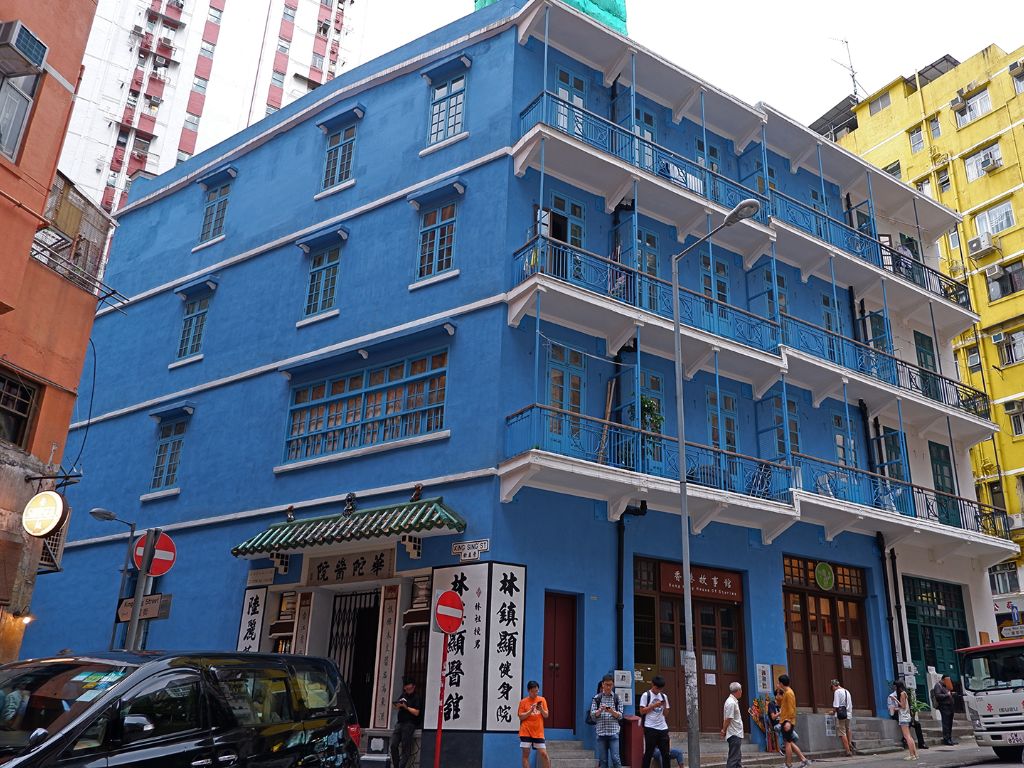Sandwiched between the sky-high glass and steel towers that define Hong Kong’s urban landscape are buildings that serve as evidence of the city’s architectural past. Low-rise and sturdy, tong lau — which literally means 'Chinese building' — were typical of 19th century urban living in southern China and Southeast Asia.

“Tong lau became a part of Hong Kong’s urban makeup as soon as the Chinese began to settle in Hong Kong and imported their urban shophouse tradition,” says Lee Ho Yin, director of the conservation programmes at the University of Hong Kong. As far back as the 1850s, a 'Chinese Town' of tong lau-flanked streets had risen in present-day Tai Ping Shan Street
{{title}} Address {{address}} Website {{website}} More info , in what was then known as the City of Victoria.

Tong lau changes through the decades
Among the earliest remaining examples is a three-storey structure at 120 Wellington Street, Central, which was built in the 1880s and received Grade 1 historic building status in 2017. By the 1920s, reinforced concrete had crept into the construction of shophouses, which can be seen on Stone Nullah Lane, while Art Deco features adorn those built in the 1930s. Lee points to Kowloon for some of the best tong lau from this era, namely Prince Edward Road West
{{title}} Address {{address}} Website {{website}} More info and Lui Seng Chun
{{title}} Address {{address}} Website {{website}} More info , whose columned facades employ the shophouse aesthetic that has become synonymous with tong lau — a ground-floor retail space and covered walkway to provide shelter from Hong Kong’s rain and sun, and residences above.
Tong lau grew taller until they eventually fell out of favour “at the end of the 1950s, when developers called for the government to allow the construction of bigger buildings,” says Lee. However, over the past decade there has been an increasing number of redevelopment projects dedicated to restoring these architectural treasures and reviving their place in the city’s urban landscape.

‘Old Hong Kong’ is popular once again
Perched above one of Tai Ping Shan’s main arteries, Wing Lee Street
{{title}} Address {{address}} Website {{website}} More info is one such enclave. Built in the 1950s, the block was originally designated for redevelopment until it was saved by public demand after appearing in the popular 2010 film, Echoes of the Rainbow.
Elsewhere in Tai Ping Shan, on Sai Street
{{title}} Address {{address}} Website {{website}} More info , one of the district’s pre-war tong lau has been given a 21st century upgrade courtesy of Portuguese graffiti and street artist Alexandre Farto, better known as Vhils, who has carved the face of Cuban revolutionary leader Che Guevara into the building’s exterior. His work, which plays with the patina of the facade, reveals the history of the structure and exists in sensitive but striking contrast to the traditional tiled roof. Rachel Liu, who rents an apartment in the building, says that she was attracted to that address for its heritage. “I have always been drawn to ‘old Hong Kong’ and knew that I wanted to live somewhere rich in history. Hong Kong’s tong lau are so unique to the city, it is a real honour to get to enjoy one from such a unique perspective,” she says.

Further east are Wan Chai’s coloured houses
{{title}} Address {{address}} Website {{website}} More info , three brightly-hued tenement blocks dating back to the 1920s that stand proud in sunflower yellow, azure and tangerine. Embellished with cantilevered balconies, each of which is a symbol of the life lived within the apartments they front, these blocks hold almost a hundred years of history within their walls, some of which can be experienced at the Hong Kong House of Stories, a museum dedicated to conserving the cultural heritage of a city that still wears its history on its streets.
Information in this article is subject to change without advance notice. Please contact the relevant product or service providers for enquiries.
The Hong Kong Tourism Board disclaims any liability as to the quality or fitness for purpose of third party products and services; and makes no representation or warranty as to the accuracy, adequacy or reliability of any information contained herein.





